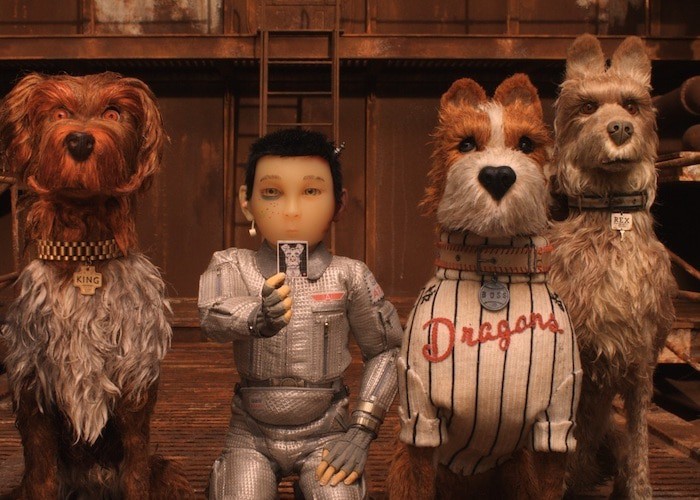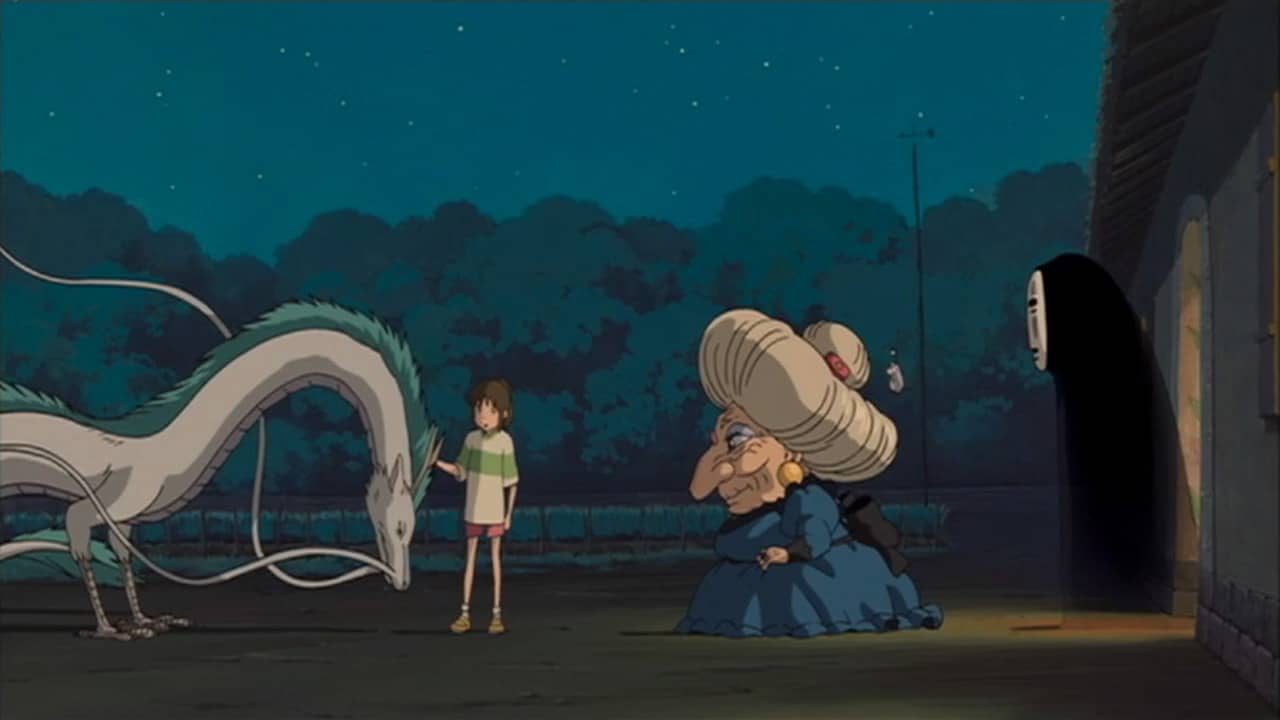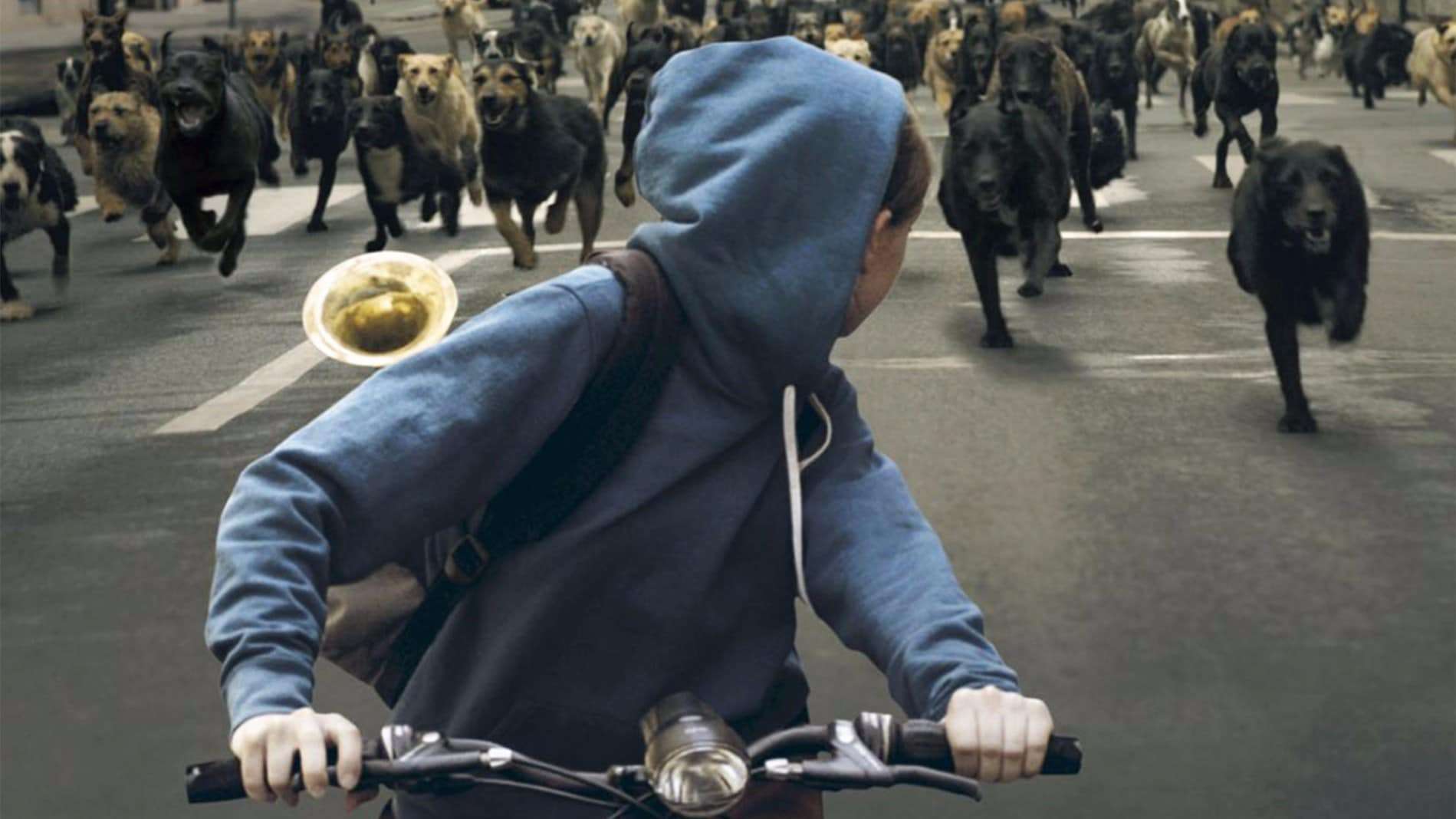
Spirited Away (2001)

This is actually one of my least favorite Miyazaki films — not that I dislike it; I just enjoy many of his others more. But the Oscar-winning animated feature is one of his most popular and accessible, and due to its success at the box office and with the Academy, it’s probably been the biggest gateway for Americans to get into the filmmaker and Studio Ghibli productions overall. Spirited Away also seems to have the most direct link to Isle of Dogs by featuring the voice of Mari Natsuki — who plays “Yubaba” in the original-language version of Miyazaki’s film. (It’s actually kind of amazing that not one of the many main Isle of Dogs actors has ever participated in one of the Miyazaki English-language dubs.)
Spirited Away is also about a child navigating a strange world. Inspired by classic international children’s stories, like the equally surreal “Alice’s Adventures in Wonderland,” and Japanese mythology, the movie is a kind of a Shinto pastiche fantasy. Miyazaki often pays tribute to his own nation’s cultural heritage while adapting it to his own wondrous, often downright bizarre aesthetic. When speaking of Isle of Dogs‘s influences at the Berlin Film Festival last month, Anderson did cite this film, albeit specifically for the casting connection, and said of the legendary animator’s general inspiration, “With Miyazaki you get nature and you get moments of peace and a kind of rhythm that is not in the American, for instance, animation tradition so much.”
Manufactured Landscapes (2006)

In an in-depth look at of Isle of Dogs by Architectural Digest, production designers Paul Harrod and Adam Stockhausen highlight many inspirations, from a Frank Lloyd Wright commission in Tokyo to the Ukiyo-e art movement, while for Trash Island specifically the team was influenced by the photography of Chris Jordan and Edward Burtynsky. The latter is the subject of this documentary by Jennifer Baichwal, focusing on a series of works made from a trip to China capturing such artificial landscapes as giant factories and other industrialized environments and the effects of man on nature. There are images of trash that look like the settings of Anderson’s movie.
Burtynsky is also the subject (and co-director) of another film by Baichwal called Watermark, which is more specifically focused on man’s control over water, including with dams. Jordan meanwhile has been featured in a few documentaries as well, mostly centered on man’s consumption and waste and what it’s doing to the world — one of them is Bag It, about the problem of plastic trash, and it puts a spotlight on the real trash island known as the Great Pacific garbage patch (on that specific subject, there’s also Garbage Island and Plastic Paradise). Another documentary I thought about while watching the Trash Island scenes in Isle of Dogs is the Oscar-nominated Waste Land, Lucy Walker’s profile of artist Vik Muniz as he works on a project involving scavengers working at Rio’s giant landfill Jardim Gramacho.
Barking Island (2010)

The plot of Isle of Dogs seems like it could only take place in the dark future of a sci-fi film, but a very similar scenario happened in real life and is a shameful moment in Turkish history. Known as the “Hayırsızada Dog Massacre,” the event involved an overrun of stray dogs in then-Constantinople in 1910 where all the animals were rounded up and shipped to the island of Sivriada, where they ultimately died by the tens of thousands due to starvation or dog-against-dog violence because of hunger or some other tragic fate. Apparently such a canine exile was attempted the century prior too, but public protests made the sultan Mahmud II bring back all the dogs.
Serge Avedikian’s Barking Island (aka Chienne d’histoire), which won the award for best short film at the 2010 Cannes Film Festival, is a uniquely animated depiction of the later, fully-carried-out Turkish isle of dogs story and is just 15 minutes in length. It’s a sad work for the literal plot, especially given that only the dogs are given a voice (but not like Anderson’s film, where the canines speak English), but it also works as a powerful allegory for the Armenian Genocide, which happened in the same territory just five years later. Also, once you’ve seen and know the tale of the dog massacre, last year’s hit documentary Kedi, about stray cats in Istanbul (not Constantinople), can be considered in a whole new light.
White God (2014)

One of the most unforgettable foreign films in recent years, White God is striking for its large ensemble of real dogs and the collective performance that director Kornél Mundruczó gets out of the animals. There’s some similarity in the premise to that of Isle of Dogs. A young girl’s new guardian (her biological father, but she hardly knows him) gets rid of her beloved mutt and she takes off in search of the pet. Meanwhile, the film also follows the dog’s narrative as he attempts to stay alive on the streets of the city, befriending other pups and eventually leading a sort of mass prison break and revolt.
Our own Rob Hunter described White God in his review as “the heartwarming quest for reunion from Homeward Bound meets the flesh-tearing mayhem of Man’s Best Friend, which is pretty apt. The movie has also been compared a lot to the Planet of the Apes films, which is also perfect as a link to Isle of Dogs — the crash landing of the kid, Atari, on Trash Island resembled to me Charlton Heston’s arrival on the Planet of the Apes in the 1968 original. If you prefer a more family-friendly film about a child’s search and ultimate reunion with a lost dog, though, I recommend Richard Balducci’s silent 1968 short film Clown.
Related Topics: Movie DNA
